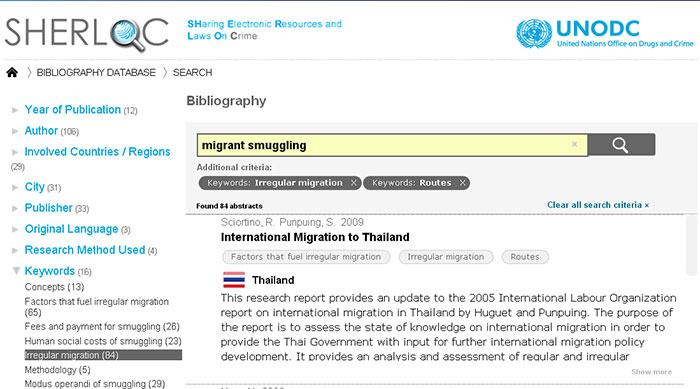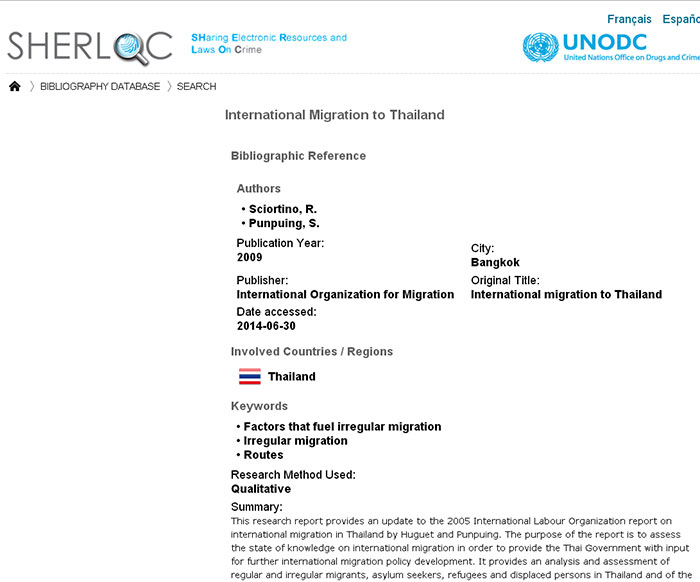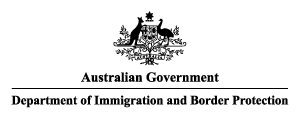Smuggling of Migrants is a crime involving the procurement of financial, or other material benefit, of illegal entry and/or stay of a person in a State of which that person is not a national or resident. Migrant smuggling affects almost every country in the world; it undermines the integrity of countries and communities, and costs thousands of migrants their lives every year.
As the guardian of the United Nations Convention against Transnational Organized Crime and its supplementing Protocol to Prevent, Suppress and Punish Trafficking in Persons, Especially Women and Children and Protocol against the Smuggling of Migrants by Land, Sea and Air, UNODC's primary goal is to promote global adherence to these instruments and assist states in their efforts to effectively implement them. A crucial prerequisite in responding to these challenges is fostering evidence-based knowledge on these topics to raise awareness and inform adequate policy development.
With the objective of making knowledge more accessible, UNODC Regional Center for East Asia and the Pacific collected and summarized research publications that contribute to increasing the understanding of migrant smuggling and related conduct. In order to expand the reach of this knowledge, and encourage further evidence-based studies on migrant smuggling, the abstracts of the summarized research publications were entered into a database - the Bibliographic Database on Migrant Smuggling and Related Conduct - which is integrated into UNODC's
SHaring Electronic Resources and Laws On Crime (SHERLOC) and available
here.
The system requires an internet connection and is optimized for newer web browsers, such as: Firefox (10 or higher), Google Chrome (10.0 or higher) or Safari (5 or higher).
The database consists of summarized publications, which include topics related to the following:
The online library currently contains almost 300 summaries of research publications. These summaries where obtained as a the result of two UNODC research projects, Annotated Bibliography Volume I and II, that were conducted in 2010 and 2013.
The Annotated Bibliography Volume I focused on the following countries: Afghanistan, Cambodia, China, India, Indonesia, Lao PDR, Malaysia, the Maldives, Myanmar, Pakistan, Singapore, Sri Lanka, Thailand and Viet Nam.
The Annotated Bibliography Volume II served to update the previous research and extended the geographical area to cover all countries and territories that are part of the
Bali Process. This includes: Afghanistan, Australia, Bangladesh, Bhutan, Brunei Darussalam, Cambodia, China, DPR Korea, Fiji, Hong Kong, China, India, Indonesia, Iran, Iraq, Japan, Jordan, Kiribati, Lao PDR, Macau SAR, Malaysia, Maldives, Mongolia, Myanmar, Nauru, Nepal, New Caledonia, New Zealand, Pakistan, Palau, Papua New Guinea, Philippines, Republic of Korea, Samoa, Singapore, Solomon Islands, Sri Lanka, Syria, Thailand, Timor-Leste, Tonga, Turkey, United Arab Emirates, United States of America, Vanuatu and Viet Nam.
The online library allows users to search the publication summaries through a key word search that covers the following terms:
| Key word | Description of the subject covered |
| Irregular migration | Movement that takes place outside the regulatory norms of the sending, transit and receiving countries |
| Smuggling | Facilitating the illegal entry and/or stay of another for profit, with document offences to achieve this |
| Concepts | Use and usefulness of concepts of migrant smuggling or irregular migration |
| Methodology | Research methodologies used in research on irregular migration or migrant smuggling |
| Quantitative assessment | Size of irregular migration or smuggling flows |
| Routes | Geography of irregular migration or migrant smuggling |
| Profiles of smugglers | Geographical, demographic, socio-economic characteristics of smugglers and/or their motivations |
| Profiles of irregular migrants | Geographical, demographic, socio-economic characteristics of irregular migrants and/or their motivations |
| Profiles of smuggled migrants | Geographical, demographic, socio-economic characteristics of smuggled migrants and/or their motivations |
| Smuggler-migrant relationship | How migrants portray or perceive smugglers; the nature or quality of the relationship and/or factors that impact on that relationship |
| Organization of smuggling | The organizational or business structures in smuggling operations; relationships between actors in smuggling operations; involvement in their criminality; specialization and professionalism of smugglers; influences on their organization |
| Modus operandi of smuggling | Methods of recruitment, payment, transfer of criminal proceeds, transportation, use/misuse of documents in smuggling process, role of corruption; factors that result in changes to modus operandi of migrant smuggling |
| Fees and payment for smuggling | Fees paid by migrants, factors that determine fees, how migrants mobilize fees |
| Human and social costs of smuggling | Death toll, trauma, stranded migrants and socio-economic impact of mobilizing fees for smuggling |
| Factors that fuel irregular migration | Push-and-pull factors for irregular or smuggled migrants; the risks and rewards for smugglers (factors that drive them towards involvement in migrant smuggling or away from it) |
To learn more about the research methodology that was used, please refer to the following publications:
Migrant Smuggling in Asia: A Thematic Review of Literature,
Migrant Smuggling in Asia: An Annotated Bibliography and
Migrant Smuggling in Asia: An Annotated Bibliography Volume II.
Screen shots for Visual:


The research to establish the Bibliographic Database and its maintenance are supported by the Australian Government Department of Immigration and Border Protection.
